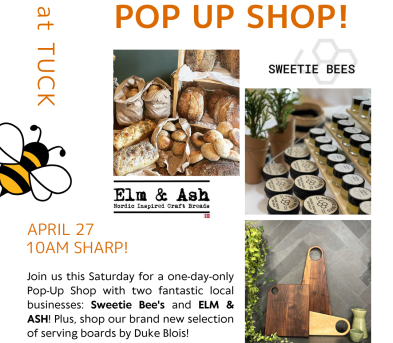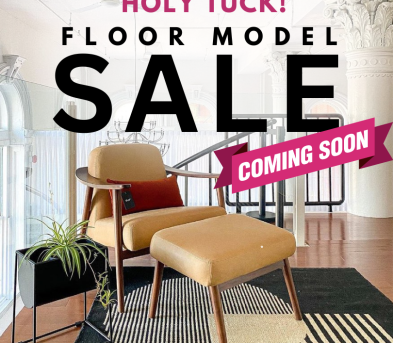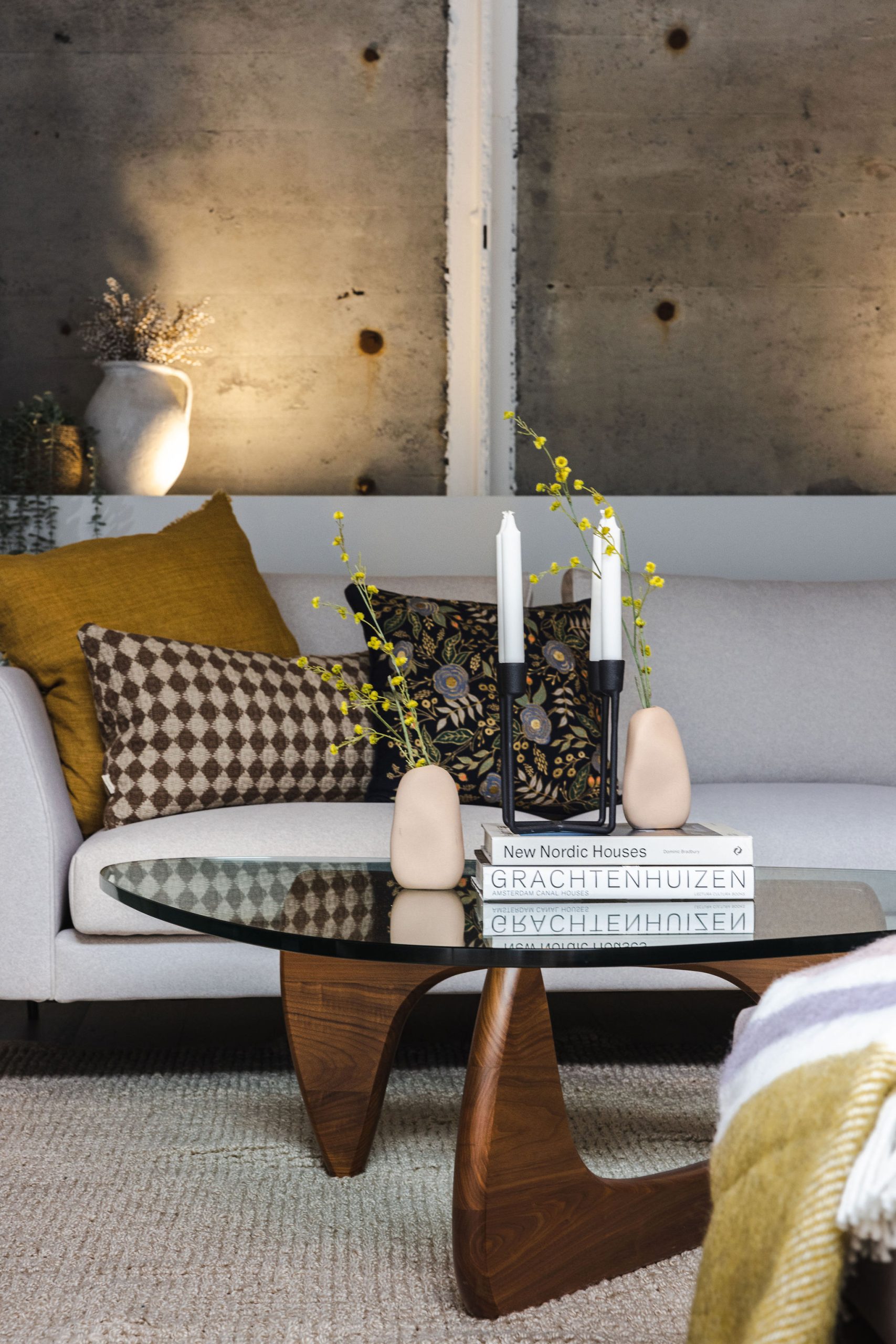HGTV Interview: Judith Mackin interviews Iconic Industrial Designer Harry Allen Part 2
GUEST BLOGGER
Judith Mackin is founder and creative director of Punch Inside, an interior design firm in Saint John, New Brunswick. She also owns TUCK STUDIO, a design and decor studio which opened last fall. Follow Judith @judithmackin@tuckstudio
Interview with Iconic IndustrialDesigner Harry Allen Part 2
Part 1 of our interview with designer Harry Allen ran yesterday; in part 2 we got a peek inside Harry’s New York City studio and learned how his family relationships inform his work. We also met his bassett hound Ben! Read on for more from Harry Allen, including a visit to his home!
![]() Judith: Of the projects your studio team is currently working on, which one is the most challenging and/or interesting to you?
Judith: Of the projects your studio team is currently working on, which one is the most challenging and/or interesting to you?
Harry: I have been working on some residential interiors. I know, I am a chameleon, now I am a decorator! But it has been very interesting to shop with clients, to see what they want and why. It will have great bearing on my product design, I think.
Judith: In an earlier interview, you said that there is too much design in the world, not enough manufacturers to produce the design, and, at the other end of things, not enough consumers of design. Does this imbalance between output and consumption affect the way you approach design?
Harry: Not really. I try to make things that I think the world might want or need. I try to add beauty and intelligence to the objects I design, but I am a creator and we are programmed to make things.
As the world crashed down around us in 2008 I had a very optimistic thought. I hoped that the intersection between the excess of the pre-2008 world and the appreciation for art, design, and intellectual property that excess engendered, might intersect with the new, more restrained buying habits of the post-2008 world.
I am a great proponent of “fewer, better things.” I was hoping that maybe people rather than buyinga bunch of junky things in the box stores, might save up to buy one or two great things from a design gallery. Unfortunately I do not think my premonition will come true, but it gives you a glimpse into how I think consumers should be consuming.
Judith: Most people may not be aware that much of your success comes from designing commercial and residential interiors. One point you shared with me earlier was that you prefer “curating” a space to “decorating” it. Could you please explain the difference?
Harry: I approach interiors from two standpoints. The architectural shell, and then what goes into them. The shell is the most important part, the bones, and then I layer objects on top of that. If you have good bones it is easy.
What I do not try to do is match everything or develop a scheme. That to me is decorating. I believe that it is one’s responsibility to become a connoisseur, to learn about the objects one lives with, to understand how they are made, what they mean, and where they come from. That is when interiors get interesting. Everything I have in my life has meaning.
Judith: It’s very generous of you to open your loft to me (and the Canadians reading this on HGTV!). I note you have many pieces by photographers, artists, and other designers, as in yourliving room light by David Weeks and the sculpture chair by Donald Judd. Yet you said you just picked up the skeleton sculpture from a second hand antiques store because you simply liked it. Can you tell me how you approach your space in terms of design and placement of objects?
![]()
The light blue bisque porcelain vase by the Dutch collective, Foekje Fleur for Paul Smith was purchased the day before this interview – a Christmas gift from Harry to Harry, along with the original candlesticks, the inspiration for ‘Gran’s Candlesticks’ . The Orange Soapbubble vase is Ann Wahlstrom for Orrefors. Framed poster by Gilbert Lesser. (Lesser also designed the Studio 54 logo).
![]() Harry’s livingroom. The Banquet, custom designed by Harry for DUNE (called the Ferguson sofa) is made of birch and foam and upholstered in Maharam fabric. Cushions are by John Robshaw Asian Textiles. John was Harry’s grad school roommate. Harry also designed the box lamp (2002). Ceiling light by friend and designer, David Weeks. (http://davidweeksstudio.com)
Harry’s livingroom. The Banquet, custom designed by Harry for DUNE (called the Ferguson sofa) is made of birch and foam and upholstered in Maharam fabric. Cushions are by John Robshaw Asian Textiles. John was Harry’s grad school roommate. Harry also designed the box lamp (2002). Ceiling light by friend and designer, David Weeks. (http://davidweeksstudio.com)
Harry: I believe that if you have two beautiful objects that they will go together, and if you have a roomful of beautiful objects, you will have a beautiful room. I ignore color and pattern and look more at how things are made, what they are made of, who made them, the ideas that they contain, and how well they perform their function. I have been at this game for a long time so I have an encyclopedic knowledge of the design world. I am not a typical consumer, and I am always amazed at what gets me to take out my wallet.
Take that little skeleton for instance – I had two small black skulls that people had given me that were sitting on my dresser, one is a cheap little native souvenir given to me by my friend Barney Brown after one of his trips. It sat in a drawer until my friend Justin, one half of the glassblowing duo, Esque, gave me a little black glass skull. I love bones and skulls. So when I saw the little anatomically correct skeleton in the antiques store I just thought it was perfect to join them. It is beautifully made and it is a constant reminder of the fragility and beauty of human life.
![]() Items on top of Chest of Drawers (salvaged years ago off the street by Harry’s father): Standing skeleton a recent acquisition from an antiques store; smaller skull, a gift from friend and Glass Skull (Esque).
Items on top of Chest of Drawers (salvaged years ago off the street by Harry’s father): Standing skeleton a recent acquisition from an antiques store; smaller skull, a gift from friend and Glass Skull (Esque).
That said, I hate collections like that, “the skull collection,” so eventually they will probably get broken up and rearranged. Nothing is more satisfying that moving things around and seeing how they relate to other objects.
![]() Judith: I am quite taken with the fact that you placed IKEA shelves as a floating cabinet to house some fairly expensive objects. Would you agree that this mixture of the democratic (affordable) and the relatively exclusive (i.e., expensive; e.g. ‘Shed’) is important to your own output?
Judith: I am quite taken with the fact that you placed IKEA shelves as a floating cabinet to house some fairly expensive objects. Would you agree that this mixture of the democratic (affordable) and the relatively exclusive (i.e., expensive; e.g. ‘Shed’) is important to your own output?
Matter ‘Shed’ (2011) by Harry Allen for Matter; Cedar Shake Shingles, Solid Cedar, Cedar plywood ($20,000)
![]() Lighting by Harry (1994, Ceramic and steel) now in the permanent collection of MoMA. Harry’s own ‘Bank in the Form of a Pig’ resin and marble (white) shares the shelf with a Sol Lewitt Sculpture, Cabbages (Stephen Hill), and photograph by Liz Deschenes. Shelves, IKEA.
Lighting by Harry (1994, Ceramic and steel) now in the permanent collection of MoMA. Harry’s own ‘Bank in the Form of a Pig’ resin and marble (white) shares the shelf with a Sol Lewitt Sculpture, Cabbages (Stephen Hill), and photograph by Liz Deschenes. Shelves, IKEA.
Harry: Yes, $100 for the cabinets, and $1000 (not really) to hang them in a beautiful way. I understand design at all levels. I am not made of money. I have great access and great knowledge, but nothing thrills me more than a bargain. And there are lots of design bargains to be had.
The great 20th Century industrial design fantasy, upon which all students of my generation were weaned, is to design one great piece and have it multiplied and accessible to the masses. I love that idea. I also love the idea of the one off, designer-created cabinet. Even better, I love when those two things are in the same room and start a dialogue between high and low art. In my life I want to pull from as many sources as I can.
I always liken my apartment to a party. I invite the intellectuals, the beauties, the old and the young,friends and strangers, and the rich and the poor. I try to get as diverse a crowd as possible and see what sort of interaction I can get going – that’s what makes life fun and interesting.




